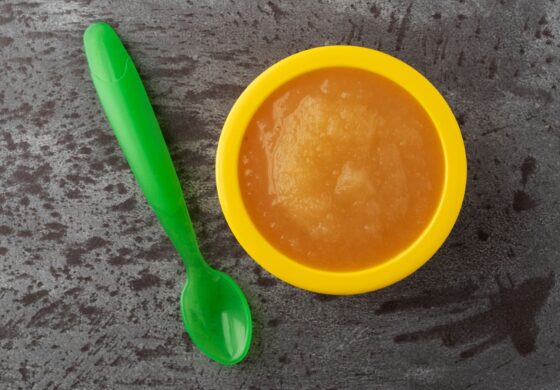Are you finding that your little one seems to only like soft foods? Parents often come to us, concerned that their child is refusing meat, fruits, and vegetables that are crunchy or chewy. It can be so stressful for parents who want their child to start enjoying the same foods as the rest of the family!
Thankfully there are definitely things you can do to help your little one progress, and we’ll give you some quick tips here!
First of all, if you see safety concerns with crunchy or chewy foods– including choking or coughing–please discuss this with your doctor. They can help determine if you might benefit from an evaluation with a therapist who specializes in feeding and swallowing. These complex swallowing concerns are beyond the scope of this article, but we’re happy to chat with you about this in a free consultation! And if your child is under 18 months or so, this might just be normal development depending on their specific food abilities (again, feel free to schedule a free consultation!).
Ok, back to it!
These little ones usually prefer foods like yogurt, apple sauce, purees, oatmeal, mashed potatoes, etc. Sometimes they’ll also eat things like: very soft cooked vegetables, canned fruits, rice, avocado, soft scrambled eggs, and soft muffins. But when it comes to meat, chunky textures, firmer vegetables, some crackers, and many fruits –they aren’t interested.
They might flat out refuse them. They might taste and spit them out. They might hold it in their mouth for a really long time. Or they might take just one bite and not another.
Sound familiar?
So, now the WHY. The why is divided into two areas: sensory and motor.
Sensory:
- Soft foods are usually consistent in texture–they have no lumps, and they are predictable. They don’t make crunching sounds in your mouth.
- Crunchy and chewy foods can have surprising textures, sounds, and multiple flavors in just one bite.
- If your child used to eat harder foods, but now only eats soft foods, chances are they’re mostly in the sensory camp. They most likely have the motor skills to eat the harder foods, but their nervous system is reacting to a sensory quality of the food.
Motor:
- Crunchy and chewy foods require different jaw movements than soft foods. Your child isn’t able to crush crunchy or chewy foods by just mashing with their tongue, like they can with soft foods. They actually have to use a diagonal or circular jaw pattern to break the food down enough to swallow.
- These foods also require different tongue movements. With soft foods, the child can keep their tongue mostly in the middle. With harder textures, they have to be able to use their tongue to hold the food on their teeth for chewing. With each new food there is a slight change in texture and in what the tongue needs to be able to do to keep the food on those back molars.
- If your child is under 18 months or so, this may just be part of normal development, depending on which foods they are and aren’t eating.
Now to the best part– WHAT? What can you do about it!?
Sensory:
- Encourage your child to explore and play with their foods before eating. Interacting with foods with their hands can help them mentally prepare for what they might expect in their mouths.
- Try crunchy or chewy foods with a consistent texture throughout, instead of a mixed or inconsistent texture. Sausages, hotdogs, and burger patties (cut as appropriate) can be good meats to start with because they tend to have a consistent texture in each bite. Crunchy foods like crackers, freeze dried bananas, and peeled apple pieces are also good places to start.
- Model eating the foods and show them what it sounds like and looks like as it breaks down in your mouth first.
Motor:
- Start with meltable crunchy foods. Foods like veggie straws, baby teether crackers, and cheese puffs are meltable because they dissolve very quickly. You can work on skills needed to chew and crunch these foods, with assurance that they dissolve easily.
- Model chewing for you child–let them watch as you use your tongue to help you chew food on your back molars. Exaggerate the motion with a big open mouth and call attention to the sounds the food makes. (We encourage you to let go of manners for now!)
- Encourage eating foods that are cut into stick shapes, as it promotes chewing with back molars.
- Use oral motor tools like chewy tubes to encourage chewing on back molars.
- Use a vibrating toothbrush to stimulate the sides of the tongue and encourage movements to each side. (Neither should be pushed if your child does not readily accept).
We hope this gives you just a few ideas for things to try with your little one! Every child is different, so please get creative while being mindful of safety. As always, feel free to schedule a free consultation if you want more information or to see if your child might be a candidate for feeding therapy!
Image from Canva.com
